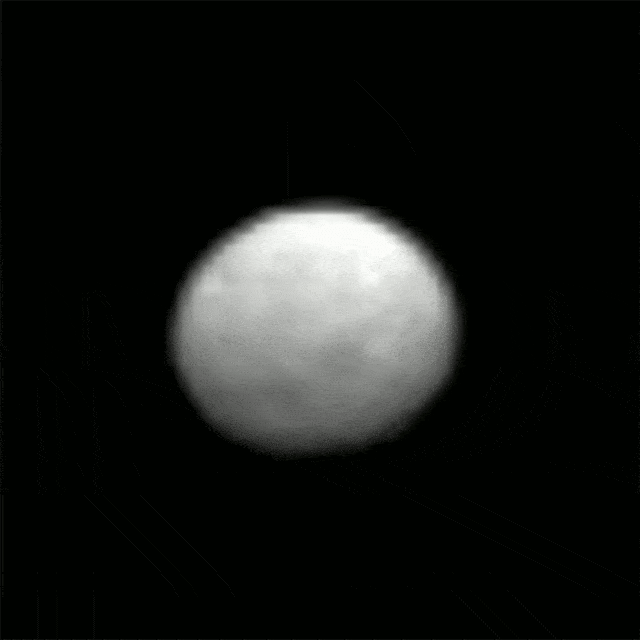NASA’s Dawn spacecraft is getting closer to Ceres – the largest object from the asteroid belt between Mars and Jupiter. The space agency released some new pictures of the dwarf planet, and while these aren’t the best pictures of Ceres yet, as the shuttle moves closer and closer, the pictures will get a better resolution.

PHOTO: This processed image, taken on Jan. 13, 2015, shows the dwarf planet Ceres as seen from the Dawn spacecraft.
Ceres’ surface is big enough to fit Texas and France, with a bit of room to spare. It has an average diameter of 590 miles (950 km). The images released today are not as good as the ones taken with the Hubble telescope a decade ago, but as Dawn gets closer to Ceres, the pictures will eventually become better than the ones Hubble took. The photos released today were taken from a distance of 238,000 miles (383,000 km), according to NASA.
“We’re going to reveal the fascinating details of a giant world of rock and ice,” said Marc Rayman, the chief engineer for NASA’s Dawn spacecraft.
“It’s not like we’re just going out to visit a chunk of rock the size of one of those mountains,” he said, pointing to the San Gabriel Mountains outside the windows at NASA’s Jet Propulsion Laboratory in Pasadena, Calif. “Ceres has 38 percent of the area of the continental United States. It’s actually the largest body between the sun and Pluto that a spacecraft has not yet visited.”
[Also Read: Water found on dwarf planet Ceres may erupt from ice volcanoes]
The most interesting feature captured is a white spot, which also showed in earlier pictures. Scientists aren’t really sure what it is, but the likely bet is that it’s a frozen pool of water ice at the bottom of a crater, clear enough to reflect sunlight. Scientists have detected puffs of water vapor emanating from Ceres that could hint at subsurface reservoirs of liquid water. However, we’ll have to wait some more before we get a better picture of it. Dawn is estimated to start circling Ceres around March 6.
“We know so much about the solar system and yet so little about dwarf planet Ceres. Now, Dawn is ready to change that,” said Marc Rayman, Dawn’s chief engineer and mission director, based at NASA’s Jet Propulsion Laboratory in Pasadena, California.
The latest images also hint at some existing craters, said Andreas Nathues, lead investigator for the framing camera team at the Max Planck Institute for Solar System Research, Gottingen, Germany.
“We look forward to the surprises this mysterious world may bring,” added Chris Russell, principal investigator for the Dawn mission, based at the University of California, Los Angeles.
Dawn already snapped more than 3,000 images of Ceres. All in all, the dwarf planet remains one of the more interesting objects in the solar system. Ceres appears to be differentiated into a rocky core and icy mantle, and may harbor an internal ocean of liquid water under its surface. The surface is probably a mixture of water ice and various hydrated minerals such as carbonates and clay. In January 2014, emissions of water vapor were detected from several regions of Ceres. This was somewhat unexpected, as large bodies in the asteroid belt do not typically emit vapor, a hallmark of comets.










